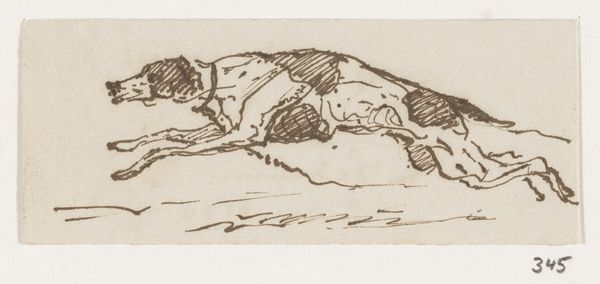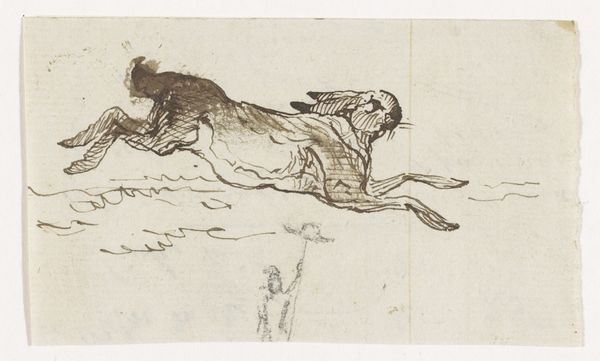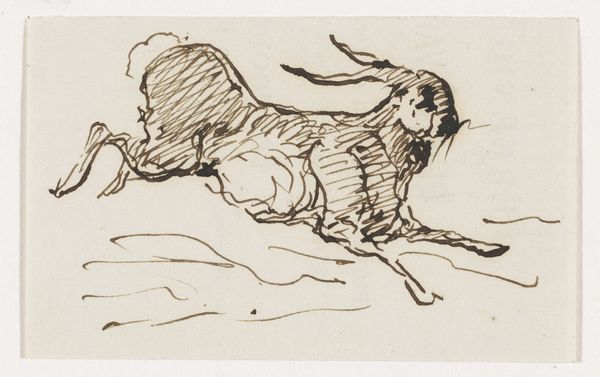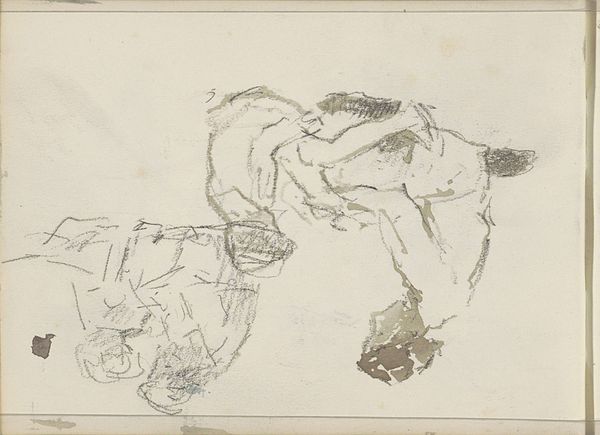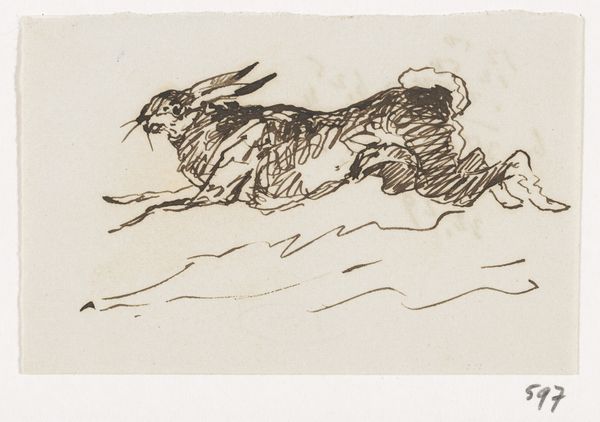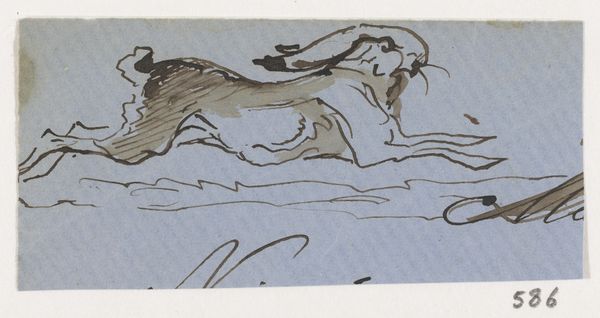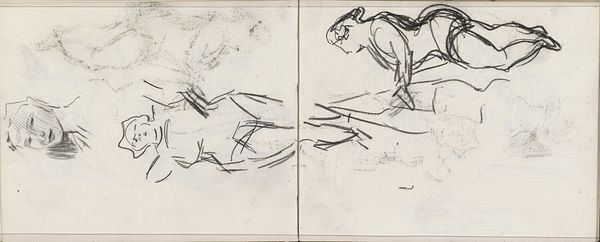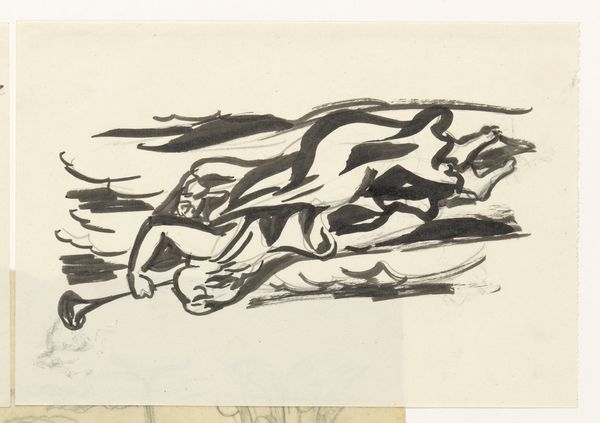
Dimensions: height 25 mm, width 70 mm
Copyright: Rijks Museum: Open Domain
This 'Haas' or hare, was made with pen and brown ink by Johannes Tavenraat in the Netherlands at some point in the 19th century. It's a quick sketch, a study of movement. But even a seemingly simple image like this can tell us something about the cultural context in which it was made. Hunting, for example, was a popular pastime among the Dutch elite, and images of animals were often associated with wealth and status. We also have to consider the institutional history of art. The 19th century saw the rise of museums and art academies, which played a crucial role in shaping artistic taste and defining what was considered 'good' art. Was Tavenraat producing this image for a specific patron or for public display? Was it intended as a finished work of art, or as a preparatory sketch for a larger composition? To understand this work more fully, we might consult historical records of hunting practices, as well as the archives of art academies and museums. Art always exists within a specific social and institutional context, and it’s the job of the historian to uncover these hidden connections.
Comments
No comments
Be the first to comment and join the conversation on the ultimate creative platform.


